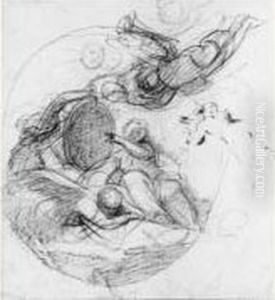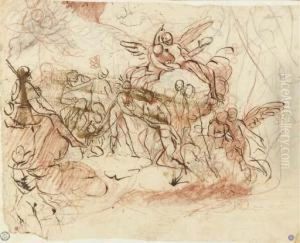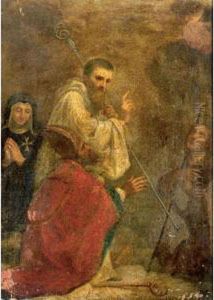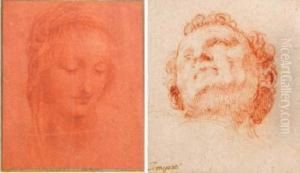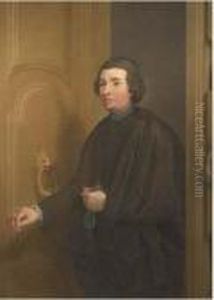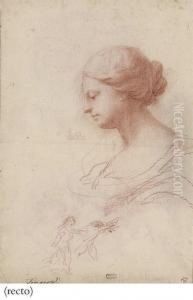Giovanni Battista Tempesti Paintings
Giovanni Battista Tempesti was an Italian painter, born in 1729 in Pistoia, a city in Tuscany, Italy, known for its rich artistic heritage. He is often associated with the late Baroque and early Neoclassical periods, a time of transition in European art when the grandeur and emotion of Baroque gave way to the clarity and reason of Neoclassicism. Tempesti's work, however, often bridged these styles, incorporating the dramatic intensity of Baroque with emerging Neoclassical ideals of harmony and restraint.
Tempesti received his initial training in his hometown but soon moved to Rome, the epicenter of Italian art, to further his studies. In Rome, he became a pupil of Sebastiano Conca, a leading painter of the Roman Baroque, whose influence is evident in Tempesti's early works. His time in Rome was pivotal, exposing him to the works of the great masters and the emerging Neoclassical style, which was beginning to gain popularity through the works of artists like Anton Raphael Mengs and, later, Jacques-Louis David.
Throughout his career, Tempesti worked on a variety of commissions, including religious and mythological subjects, which were popular at the time. He was known for his ability to infuse his subjects with a sense of drama and emotion, a characteristic of the Baroque, while adhering to the principles of composition and proportion that were hallmarks of the emerging Neoclassical style. His works were appreciated for their dynamic compositions and vibrant use of color, which helped bring his subjects to life.
Despite his talent and the quality of his work, Giovanni Battista Tempesti is not as well-known today as some of his contemporaries. Nonetheless, he made significant contributions to the Italian art scene of his time, particularly in the transition period between Baroque and Neoclassicism. His paintings can be found in various churches and collections in Italy, showcasing his skill and versatility as an artist.
Tempesti's career spanned a period of significant change in European art, and his work reflects the shift in tastes and styles that occurred during his lifetime. He died in 1804, leaving behind a body of work that, while perhaps not as celebrated as that of some of his peers, provides valuable insight into the artistic transitions of the late 18th and early 19th centuries.
